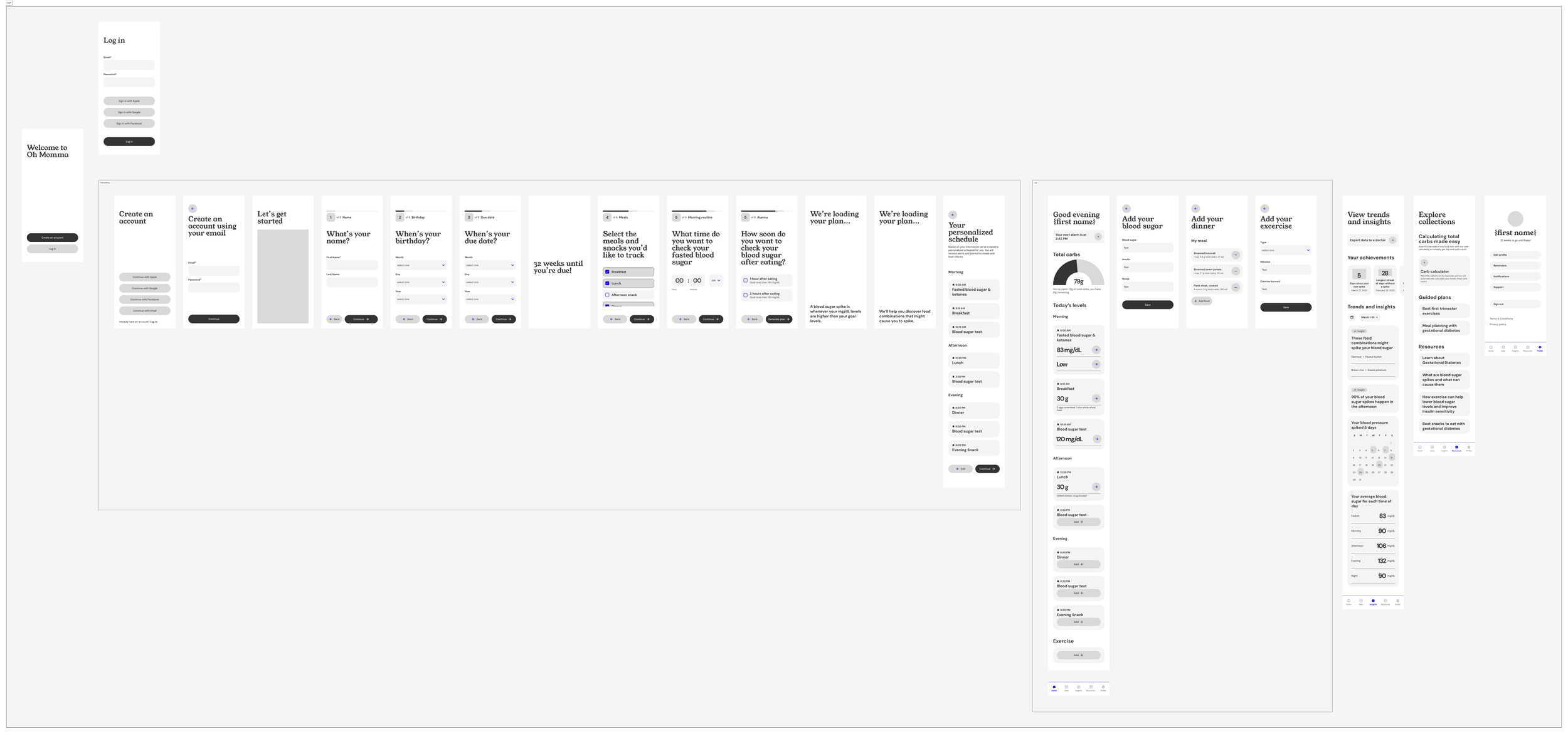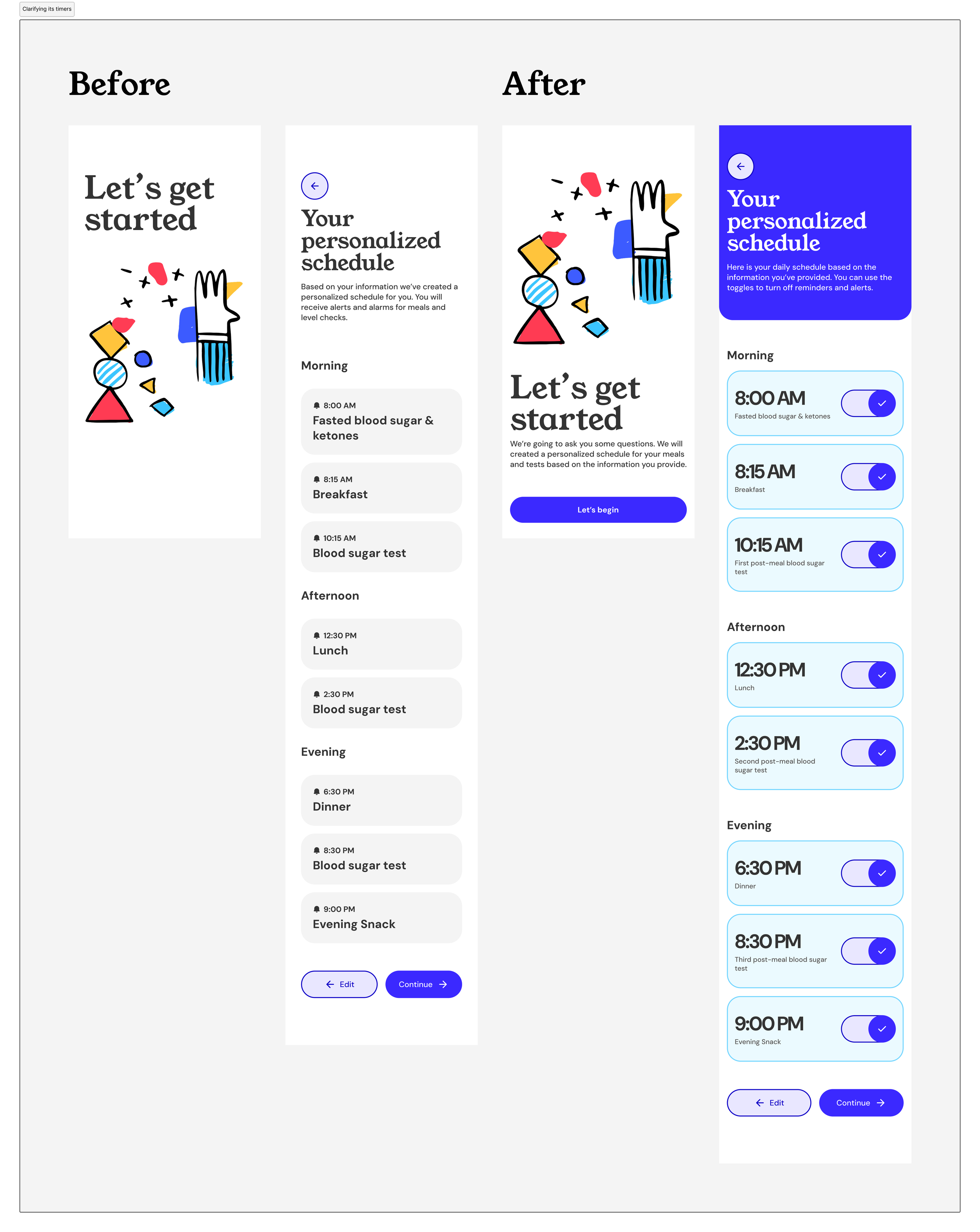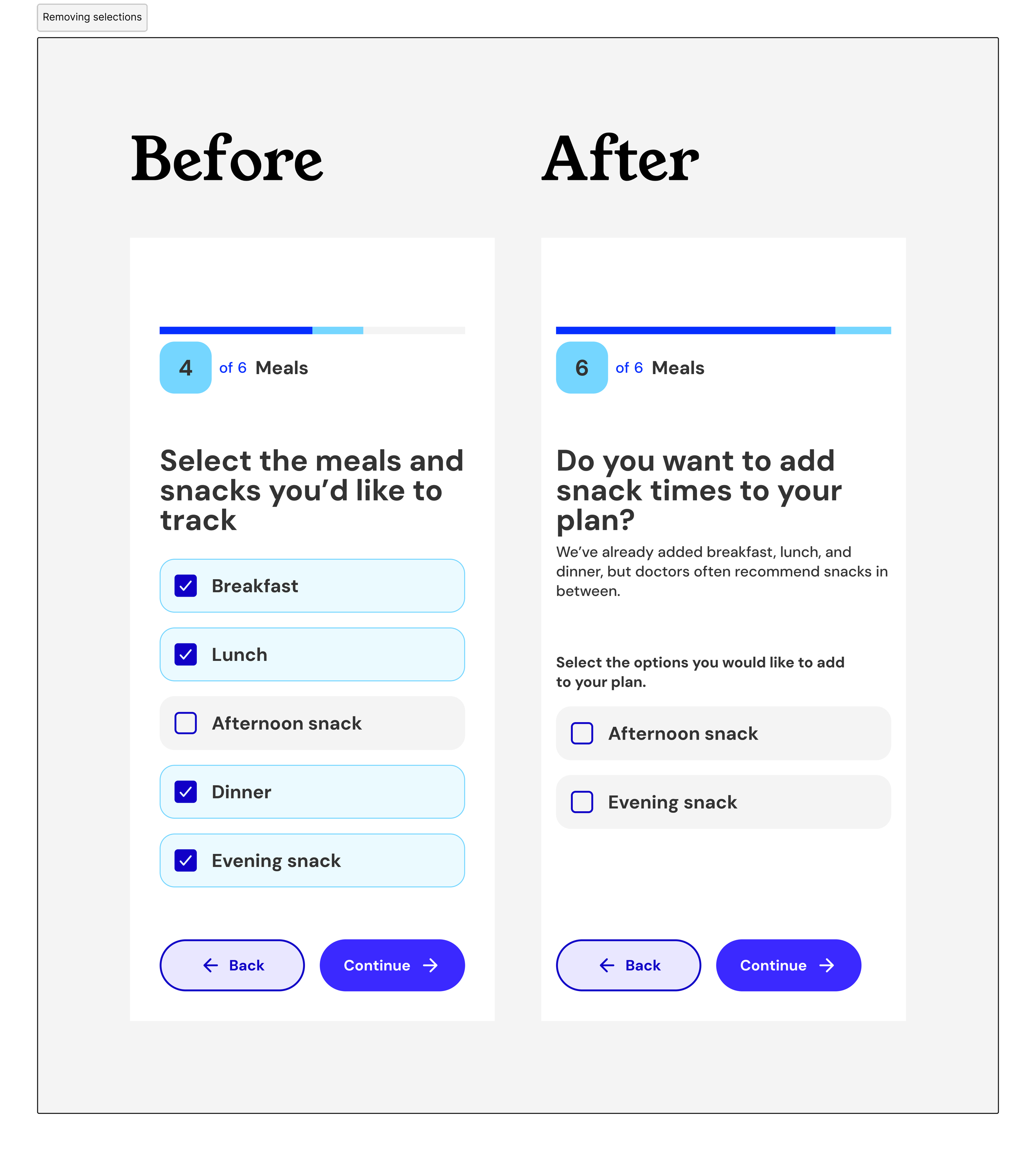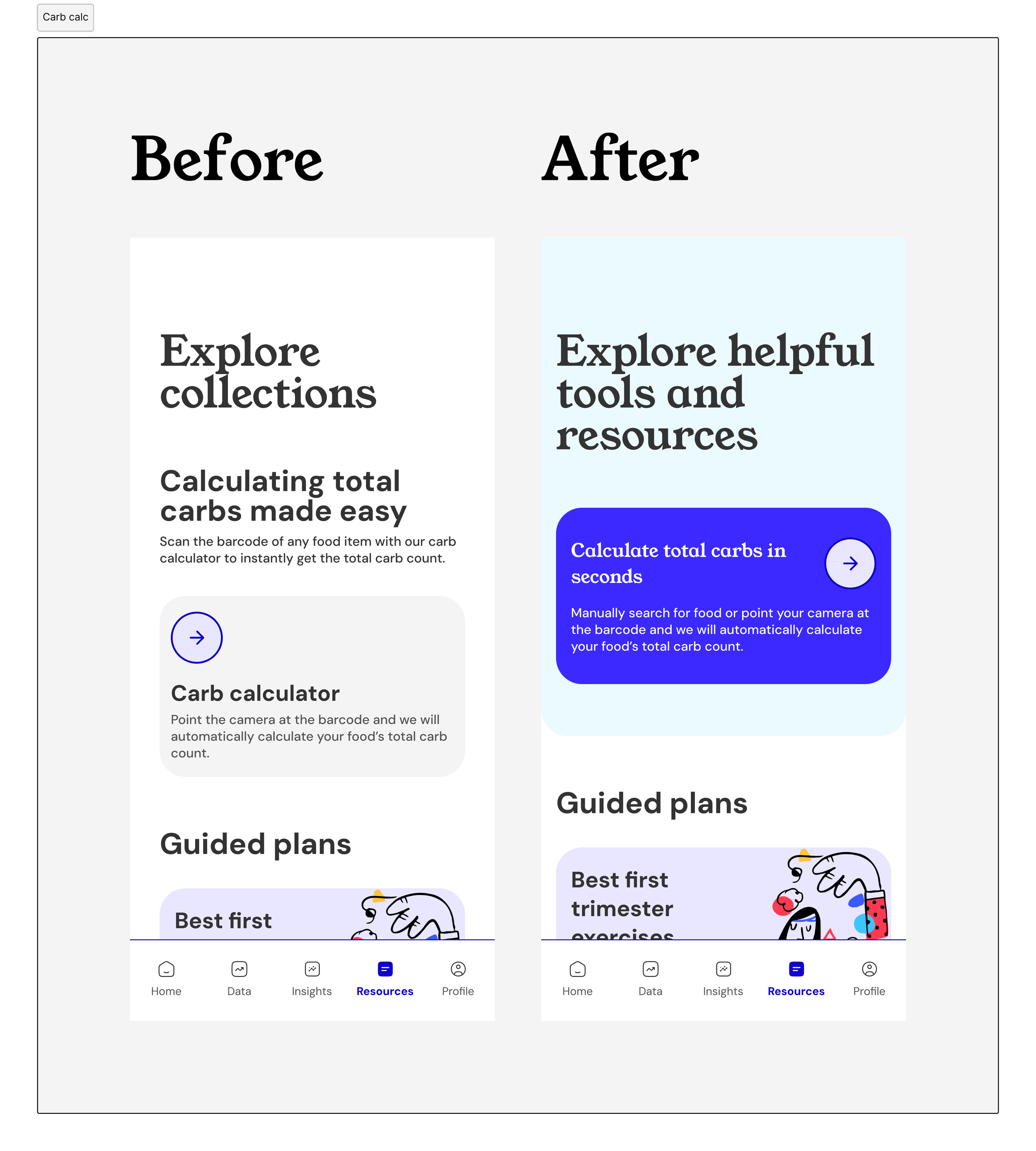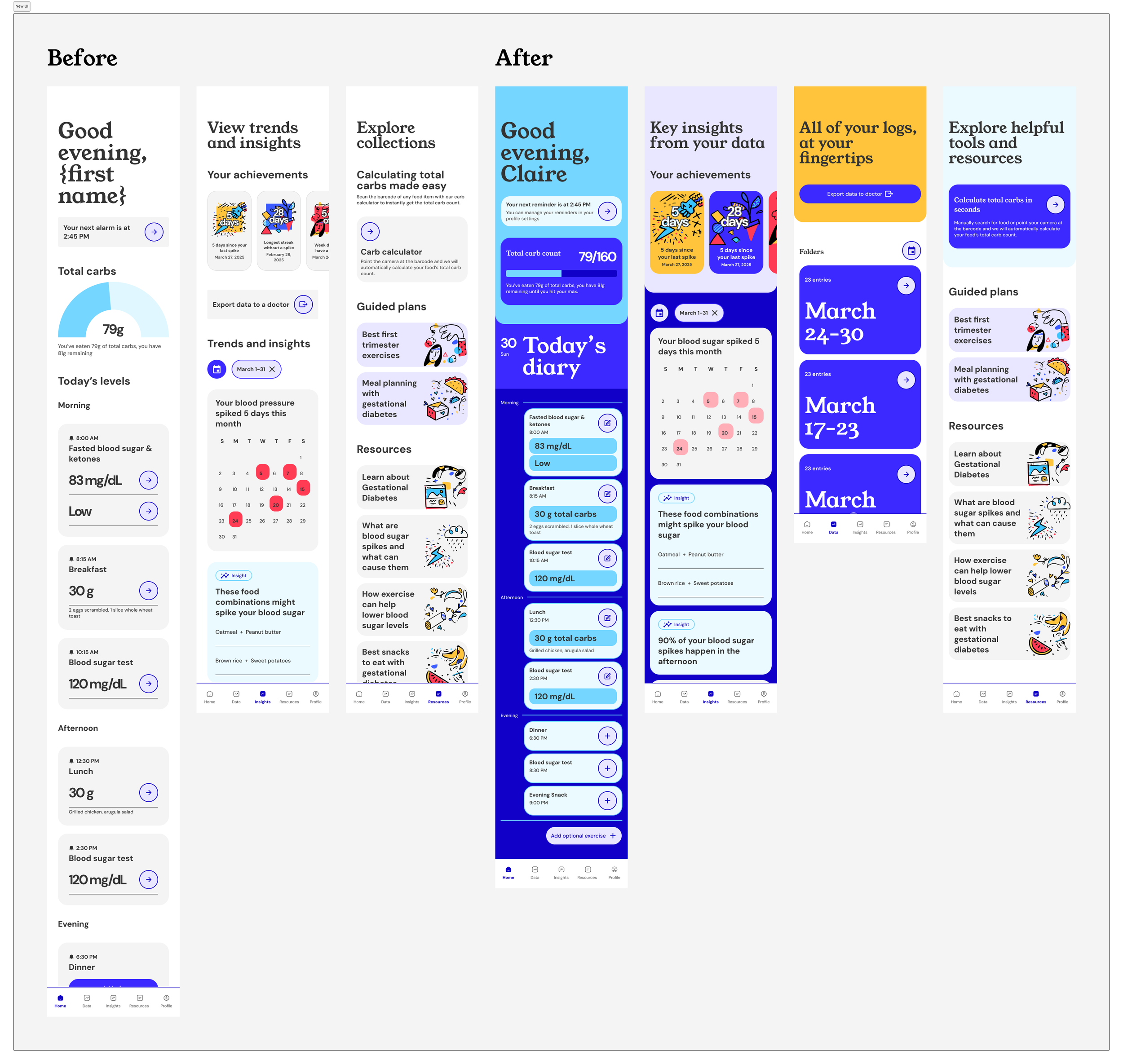Oh Momma
My Role: UX Researcher, UX Designer, UI Brand Designer
The Oh Momma application
Imagine you’re an expecting mother who has been diagnosed with gestational diabetes for the first time. You’ve been feeling overwhelmed by the flood of information coming at you, and you’re struggling to process everything at once.
Your doctor explains the changes you need to make in your diet, exercise routine, and how often you'll need to monitor your blood sugar levels. You’re already juggling work, preparing for your baby’s arrival, and trying to keep up with normal pregnancy changes, but now it feels like you have one more thing on your plate.
The Challenge
I immediately felt the full weight of the experience as I watched my relative navigate gestational diabetes. What started as pregnancy excitement quickly turned into managing blood sugar, diet changes, and frequent doctor visits. The constant demands left her feeling drained and uncertain.
Existing apps, designed for Type 1 or Type 2 diabetes, didn’t address her unique needs. They failed to consider pregnancy-related factors like fluctuating blood sugar, dietary restrictions, and the emotional challenges of managing the condition while expecting. There was a clear gap in resources tailored to her experience.
With this in mind, my goal was to understand the logistical challenges pregnant women managing gestational diabetes face and design a mobile application to help mitigate these struggles.
My process
Competitive analysis: I analyzed existing apps to identify gaps and understand how they addressed gestational diabetes.
User interviews: I conducted interviews to uncover pain points, needs, and opportunities from real users.
Personas & user journeys: I created personas and mapped user journeys to visualize their experiences and prioritize pain points.
Wireframes: I designed wireframes to explore design ideas and test different features quickly.
Prototype: I built a prototype for usability testing to identify design issues and ensure intuitiveness.
Usability testing & refinement: I iterated on the design based on user feedback to improve functionality and user experience.
Understanding users
I conducted user interviews with women aged 28 to 62 who were either actively managing gestational diabetes, had previously managed it, or had assisted family members in managing the condition. My goal was to understand:
The daily tasks women perform to manage their gestational diabetes
The frustrations they encounter in their daily routines
The features and functionality that would help women minimize the time spent managing gestational diabetes
What I learned from participants
Women struggle to maintain consistent and accurate tracking of meals and blood sugar levels due to fragmented methods
Many women rely on a combination of paper journals and note apps to log their meals and blood sugar levels. This inconsistency makes it difficult to identify trends or accurately spot abnormal spikes, as they switch between digital and physical methods based on availability.
Women often forget to set reminders to check their blood sugar or eat at specific times, disrupting their routine
Many women rely on alarms or timers to prompt them to check their blood sugar or eat at the right times, but they often forget to set them. As a result, they miss key moments to monitor or manage their condition, which disrupts their daily routine and makes it harder to maintain control over their blood sugar levels.
Women need quick and easy ways to determine total carbs to help them prepare meals and make healthier choices while grocery shopping
Many women with gestational diabetes find it time-consuming to calculate total carbs for every meal. This process slows down meal prep and grocery shopping, as they often have to read labels or search for carb information.
Women need a simple way to send their blood sugar and meal data to doctors for more informed decision-making
Many women with gestational diabetes struggle to manually track and report their blood sugar levels and meals to their doctors.
“It’s frustrating food shopping because I have to calculate the number of total carbs per serving and then see whether or not it would fit in my plan”
— Research participant
Creating the application
To start, I focused on a specific user persona: Claire, a first-time mom with gestational diabetes who is nervous about her diagnosis and meticulously plans everything. This persona was particularly concerned with accuracy, control, and reducing uncertainty in her daily routine. Based on my research and understanding of her needs, I wanted to create a solution that would help her manage her condition more effectively.
Fig 1: Flow mapping the architecture and system of the application
The app needed to enable users to track their blood sugar levels over time to identify patterns and spikes for better management. In the flow map pictured (Fig 1), you can see how users can input and track their blood sugar levels, making it easier to spot trends.
I wanted to help users plan meals, store and organize their logs, and identify food combinations that might be causing blood sugar spikes. Another key feature was providing consistent reminders to check blood sugar and eat at the right times, ensuring users stay on track with their routines and avoid missing crucial moments. To simplify carb calculation, especially when grocery shopping, dining out, or on the go, I incorporated a feature that quickly identifies carb content in foods. Finally, I designed a functionality that allows users to export their data and add notes for doctors to improve informed decision-making during appointments (Fig. 2).
Fig 2: Low fi frames
Testing the idea
After finalizing these key features, I moved on to usability testing to ensure the app effectively addressed users' needs. By gathering feedback from women actively managing gestational diabetes, I was able to identify any pain points and refine the design to enhance usability, functionality, and overall user experience.
Fig 3: Before and after making opt-in alerts more intuitive and clear
Users didn’t realize onboarding questions helped set up automatic reminders for consistency.
Users were confused about the purpose of the onboarding questions because the system didn’t explain how their answers would personalize reminders.
Design Solution: Explained earlier in the onboarding process that responses help set up automatic reminders for daily consistency. Additionally, redesigned the plan preview page to clearly indicate that users are opting into reminders (Fig 3).
Fig 4: Before and after redesigning optional meal additions
Users found the checkbox selections for adding meals to track confusing, as many options were pre-checked and as always required.
The pre-selected checkboxes caused uncertainty about which options were necessary, leading to confusion during meal tracking.
Design Solution: Removed always-required options and only included checkboxes for optional additions (Fig 4).
Fig 5: Before and after adding data logs and renaming trends to insights
Users misunderstood the “trends” feature, thinking it compared their data to others.
Users initially thought the "trends" feature compared their data with others, but after exploring it, they appreciated the insights. They also requested a separate section to view and export their full log history to doctors.
Design Solution: Changed the navigation and page name to insights, and created a dedicated page for users to view and export their full log history (Fig 5).
Fig 6: Before and after adding manual entry to the carb calculator
Users wanted more flexibility with the carb calculator tool.
Users enjoyed the barcode scanner but needed the option to manually input food items when barcodes were unavailable.
Design Solution: Added a manual entry option to the carb calculator, allowing users to input food data when no barcode was available (Fig 6).
Fig 7: Before and after branding redesign
Users found the app’s branding too muted.
Users wanted a more vibrant design, feeling that the current interface lacked energy and engagement.
Design Solution: Redesigned the branding with brighter, bolder visuals to improve user engagement and appeal (Fig 7).


